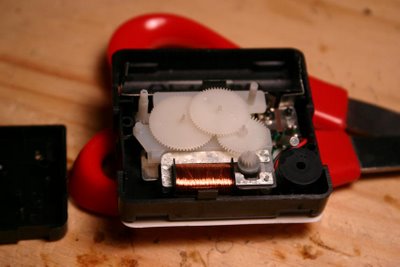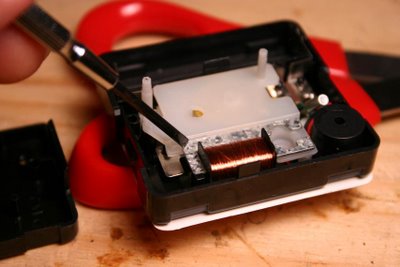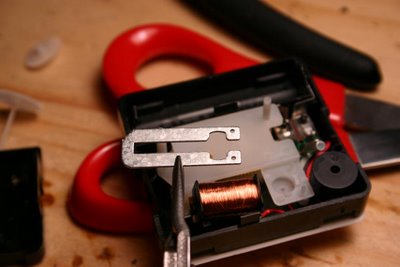Have you the time?
A fun project to do when you need a clock to run backwards.
This is a travel clock that you can set an alarm. In my experience with 3 or 4 different clocks with similar mechanisms the plate can be reversed to make the clock run counter-clockwise.


I use the scissors to place the clock shaft in the middle so it doesn't press on the gears while I work. The first thing is to get the back off of the clock to expose the gears. A small standard screwdriver is a good choice. Don't forget to take the small black knobs off the time adjustment wheel. If you don't they will shoot off as you pry the back cover of the clock.

Study the way this looks and remove parts slowly as you learn. The left most gear is minutes, the middle is seconds and the right and smallest gear below work together to calculate the second hand movement. The smallest gear turn approximately 180 degrees each second. Unfortunately, it is complicated to watch the clock with the cover removed as it requires an alignment hole to be in place on the cover side.

The gears simply pull straight up and out and you can set them down in order as you go. The focus is on the orientation of the plate inside the copper wound electromagnet. As you work the plate up and off of the pins that hold it in place, take care not to pull at the copper wound mechanism. The plate should slide out of a plastic rectangle slot, the copper is not wrapped around the plate itself.


This is the original orientation of the plate.

Some plates can be pulled out, flipped 180 degrees and be replaced, done. When it doesn't work like that, I nip off about 3/32 at a 45 degree angle as shown.

As you can see the plate is restored and it fits over the guide pins.

Take care when replacing the cover that the smallest gear is pointing straight up as much as possible to align it for the cover. When the cover is replaced it won't smash the shaft. If the shaft gets smashed they might weaken too much to be straightened again. During this mod one of the wires came off underneath the copper winding and the clock wouldn't work, so I soldered and reassembled.



















